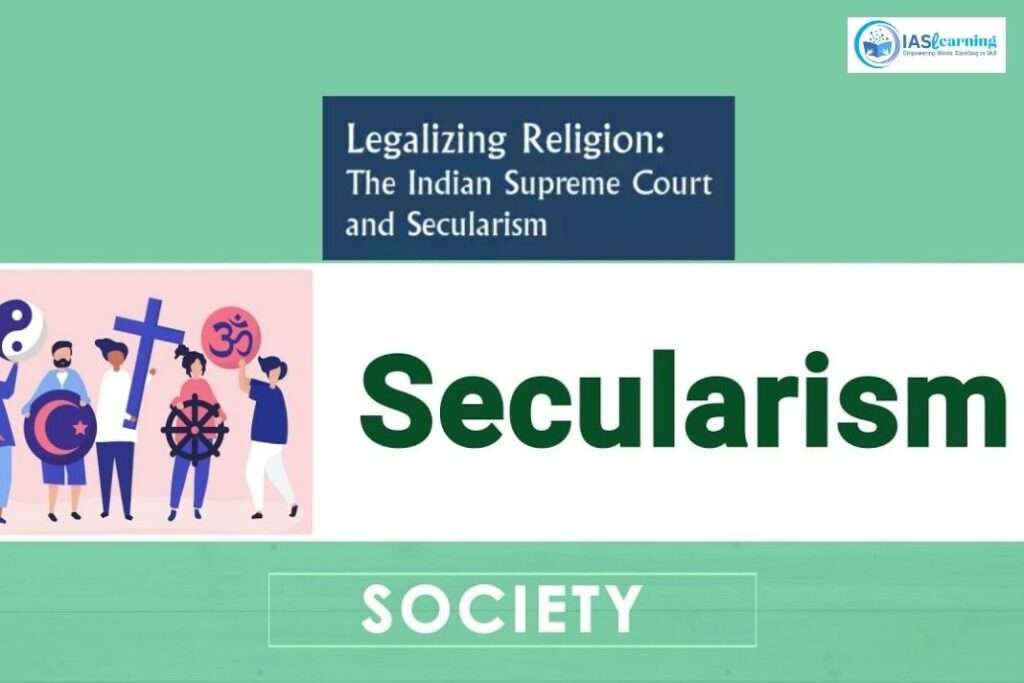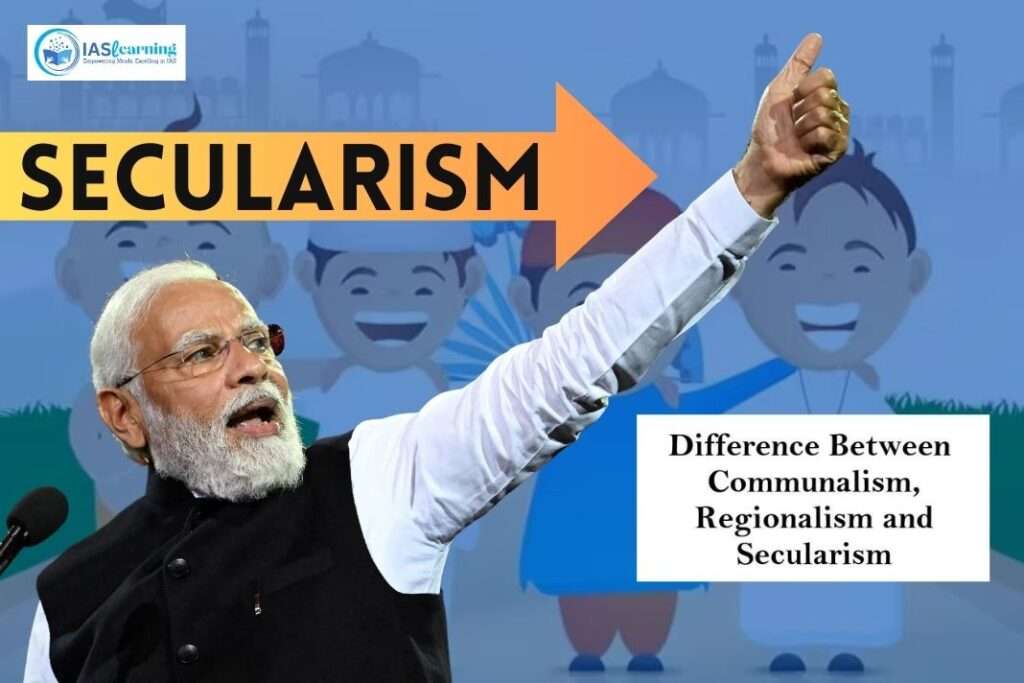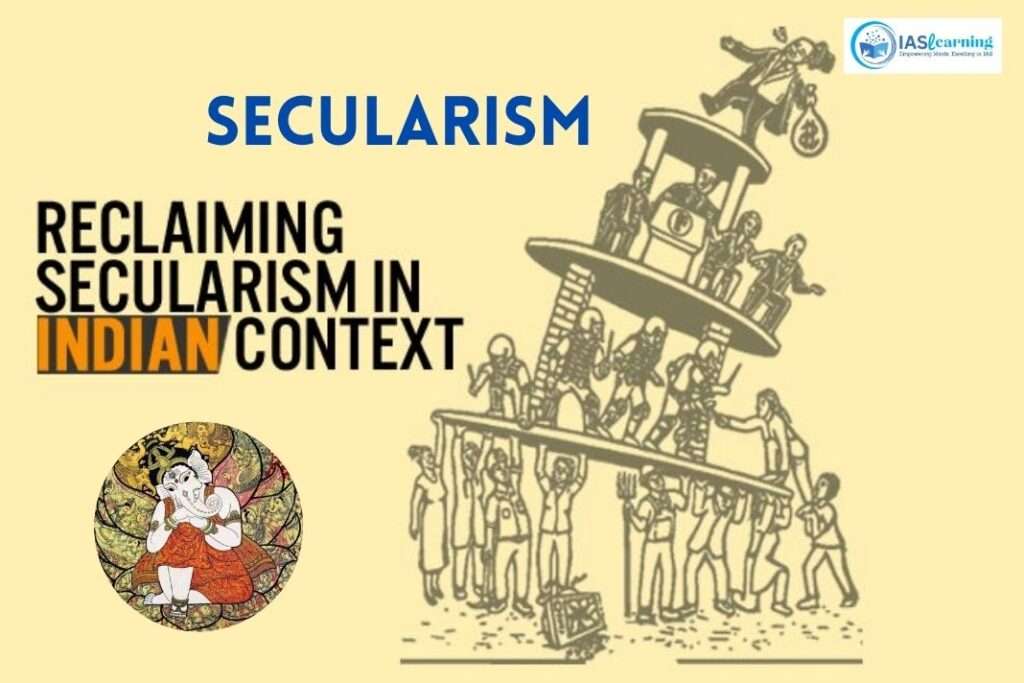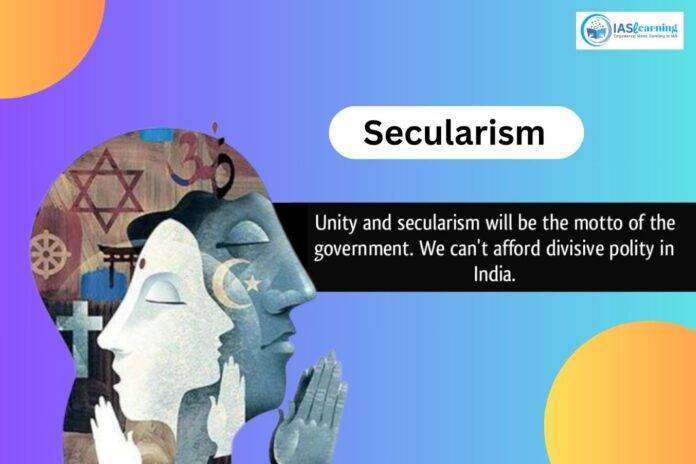Introduction to Secularism
The term “secular” refers to a concept that emphasizes the separation of religion from various aspects of life, particularly in the realms of politics, economics, society, and culture. A secular individual is someone whose moral values are not derived from or tied to any specific religion. Instead, their values are shaped by rational and scientific reasoning, as well as personal beliefs and principles.
Secularism, as a broader philosophy, advocates for the complete detachment of religion from the affairs of the state. In a secular society, religion is considered a private and personal matter, with no official or institutional endorsement. This principle underscores the importance of ensuring that government and its policies remain neutral and impartial concerning religious matters.
One of the central tenets of secularism is the promotion of freedom and tolerance of all religions. It encourages a society in which individuals are free to practice their faith or belief system without facing discrimination or bias. Secularism also stands for the idea of providing equal opportunities and treatment for followers of all religions, ensuring that no one is favored or marginalized based on their religious beliefs.
The concept of secularism is deeply rooted in the history of India, where it has played a significant role in shaping the country’s social and political landscape. Secularism, in this context, signifies the separation of religion from various aspects of public life.

Historical overview of secularism in India:
- Ancient India: Indian culture has been characterized by the assimilation of various spiritual traditions and social movements. Hinduism, also known as Sanatana Dharma, evolved to incorporate diverse spiritual traditions into a common mainstream. The development of the four Vedas, the Upanishads, and the Puranas demonstrated the religious pluralism within Hinduism.
- Emperor Ashoka: In the 3rd century B.C., Emperor Ashoka was one of the first rulers to declare that the state would not persecute any religious sect. His 12th Rock Edict emphasized the toleration of all religious sects and encouraged respect for them.
- Medieval India: During medieval India, movements like Sufism and Bhakti fostered love and peace, bringing people from various communities together. Prominent figures in these movements included Khwaja Moinuddin Chisti, Baba Farid, Sant Kabir Das, Guru Nanak Dev, Saint Tukaram, and Mira Bai.
- Akbar’s Rule: Akbar, as a Mughal emperor, promoted religious toleration and freedom of worship. He had Hindu ministers, discouraged forcible conversions, and even introduced the ‘Din-i-Ilahi,’ a faith that incorporated elements of both Hindu and Muslim beliefs. His policy emphasized “sulh-i-kul” or peace and harmony among religions and encouraged religious debates among theologians from different faiths.
- British Rule: During the British colonial period, the policy of “divide and rule” was pursued. The British implemented measures like the partition of Bengal in 1905, separate electorates for various religious groups, and the Ramsay MacDonald Communal Award of 1932, which provided for separate electorates and reserved seats for minorities.
- Indian Freedom Movement: Despite British efforts to divide, the Indian freedom movement was marked by a secular tradition. Leaders such as Sir Feroz Shah Mehta, Govind Ranade, and Gopal Krishna Gokhale pursued a secular approach to politics. The Nehru Committee’s constitution in 1928 emphasized that there should be no state religion and that the state should not favor any religion or impose disabilities based on religious beliefs or status.
- Gandhi and Nehru: Mahatma Gandhi’s secularism was rooted in the idea of brotherhood among religious communities, based on respect for and the pursuit of truth. Jawaharlal Nehru’s secularism was founded on scientific humanism with a progressive view of historical change.
- Present Scenario: In contemporary India, the separation of religion from the state remains a fundamental tenet of secularism, with the state maintaining a neutral stance towards religious matters.
The philosophy of Indian secularism is distinct and rooted in the cultural and historical context of the country. Here are some key aspects of Indian secularism:

- Dharma Nirapekshata: The term “secularism” in the Indian context is often related to the Vedic concept of “Dharma Nirapekshata,” which translates to the state’s indifference towards religion. This concept is somewhat akin to the Western model of secularism, emphasizing the complete separation of government and religion, often referred to as the “separation of church and state.”
- Sarva Dharma Sambhava: Indian secularism is deeply influenced by the idea of “Sarva Dharma Sambhava,” which means that while different religions may follow distinct paths, the ultimate destination or goal of all religions is the same. This concept underscores the principle of equal respect for all religions. It has been embraced and promoted by influential figures such as Swami Vivekananda and Mahatma Gandhi, and is often referred to as “Positive secularism.” This philosophy reflects the dominant ethos of Indian culture, emphasizing the unity of spiritual objectives despite the diversity of religious practices.
- No Official State Religion: India does not have an official state religion. The Constitution of India guarantees religious freedom and recognizes the right of individuals to follow the religion of their choice. The government does not endorse or promote any specific religion, maintaining a neutral stance toward religious matters.
- Personal Laws: While India upholds the principle of secularism, there are variations in personal laws that pertain to matters such as marriage, divorce, inheritance, and alimony. These personal laws are often specific to an individual’s religion and have been a subject of debate and reform over the years.
- Religious Plurality: Indian secularism is not merely an end in itself but serves as a means to address the rich religious diversity within the country. It seeks to achieve peaceful coexistence among different religious communities and promote religious harmony.

Secularism in Indian History:
- Indian secular traditions have deep roots in the blending of various spiritual traditions and social movements.
- In ancient India, Hinduism (Sanatana Dharma) evolved by welcoming different spiritual traditions and integrating them into a common mainstream.
- Emperor Ashoka, in the 3rd century B.C., made early proclamations that the state would not persecute any religious sect and promoted tolerance and respect for all religious sects.
- The quest for religious toleration and coexistence continued even with the arrival of Jainism, Buddhism, Islam, and Christianity.
- In medieval India, the Sufi and Bhakti movements played a significant role in bringing people of various communities together through love and peace.
- Akbar’s rule was marked by religious toleration, freedom of worship, and his policy of “sulh-i-kul” (peace and harmony among religions).
- The Indian freedom movement, despite British attempts to divide and rule, was characterized by a secular tradition and ethos.
- Prominent leaders like Mahatma Gandhi and Jawaharlal Nehru held differing but inclusive views of secularism.
Philosophy of Indian Secularism:
- Indian secularism is related to the concept of “Sarva Dharma Sambhava,” which emphasizes equal respect for all religions, irrespective of the diversity in their paths.
- This philosophy, often referred to as “Positive secularism,” reflects the dominant ethos of Indian culture.
- India does not have an official state religion, but personal laws on matters such as marriage, divorce, inheritance, and alimony vary with an individual’s religion.
- Indian secularism is viewed as a means to address religious plurality and promote peaceful coexistence among different religions.
Secularism and the Indian Constitution:
- The Indian Constitution incorporates the principles of secularism into various provisions.
- The term “Secular” was added to the preamble in the 42nd Constitution Amendment Act of 1976, emphasizing that India is a secular country with no state religion.
- Articles in the constitution ensure equality before the law, prohibit discrimination based on religion, and guarantee freedom of conscience and the right to freely profess, practice, and propagate religion.
- The constitution protects the right of religious groups or individuals to establish and maintain institutions for religious and charitable purposes.
- It also prevents the state from compelling citizens to pay taxes for the promotion of any particular religion.
- Educational institutions maintained by different religious groups are allowed to impart religious instruction.
- Special provisions grant cultural and educational rights to minorities.

| The Indian model of secularism differs significantly from the Western model of secularism in several key ways: 1. Separation of State and Religion: Western Model: In the Western model of secularism, there is a strict separation between the state and religion. The state does not interfere in religious affairs, and religion has no place in public life. Public policies are not based on religious considerations, and religious institutions are not financially supported by the state. Indian Model: In contrast, the Indian model of secularism does not require a complete separation between the state and religion. In India, both state and religion can interact and intervene in each other’s affairs within legally prescribed and judicially settled parameters. This means that while there is no “wall of separation” between religion and the state, there are legal limits to such interactions. The state allows religious minorities to establish and maintain their own educational institutions with state assistance, which is a positive form of engagement. 2. State Intervention in Religious Affairs: Western Model: The Western model of secularism generally avoids state interference in religious matters as long as religious activities are conducted within the limits of the law. Religion is relegated entirely to the private sphere and has no influence on public policy. Indian Model: In India, state intervention in religious affairs is aimed at removing social and religious practices that are considered harmful or discriminatory. For example, India has enforced legislation against practices like sati (widow-burning), dowry, animal and bird sacrifice, child marriage, and the prevention of Dalits from entering temples. This intervention is done to promote social justice and protect the rights of individuals. 3. State Involvement in Religious Institutions: Western Model: In the Western model, the state has no role in religious institutions. It does not set up departments related to religious endowments or appoint trustees for religious boards. Indian Model: India’s secularism allows for state involvement in the administration of religious institutions. It has established departments for religious endowments and Wakf Boards, and the state is also involved in appointing trustees for these boards. This involvement is intended to regulate and manage religious properties and endowments effectively. |
Threats to Secularism in India:
- Mingling of Religion and Politics: One of the significant threats to secularism in India is the fusion of religion and politics. The mobilization of votes based on religious, caste, and ethnic identities has undermined the secular principles of the state.
- Communal Politics: Communal politics involves the communalization of social spaces, spreading myths and stereotypes against religious minorities, and promoting divisive ideologies. This leads to polarization and disrupts social harmony.
- Inter-religious Conflict: When one religious group becomes politicized, it often triggers a competitive politicization of other groups. This competition for political power can result in inter-religious conflicts and tensions.
- Communal Riots: Communalism has led to outbreaks of communal violence and riots in India. These events pose a significant threat to the secular fabric of the country.
- Rise of Hindu Nationalism: The rise of Hindu nationalism has led to various issues, including mob violence related to suspicions of cow slaughter, campaigns against “love jihad,” and reconversion initiatives. These actions reinforce communal tendencies in society.
- Islamic Fundamentalism: The promotion of Islamic fundamentalism, which seeks to establish an Islamic state based on Sharia law, is another threat to India’s secular and democratic values. It can create conflicts with the secular principles of the state.
- Radicalization: Recent incidents of Muslim youth being inspired and radicalized by extremist groups like ISIS are concerning for both India and the world. This poses a security and ideological challenge.
Way Forward:
- Expand Religious Freedom: In a pluralistic society like India, expanding religious freedom is crucial. It means allowing individuals to practice their faith without fear or discrimination.
- Value Education: Implement value-based education that helps the younger generation understand and appreciate not only their religious traditions but also those of other religions. This promotes tolerance and respect.
- Common Framework: Identify a common framework or shared set of values that can help diverse groups coexist peacefully. This can be achieved through dialogue and mutual understanding.
- Uniform Civil Code: Implementing a Uniform Civil Code should be considered, but it requires creating a conducive environment and building socio-political consensus to ensure that it respects the diversity of Indian society while upholding secular principles.
Secularism is a core principle of India’s democracy, and addressing these threats is essential to maintain a harmonious and pluralistic society.




